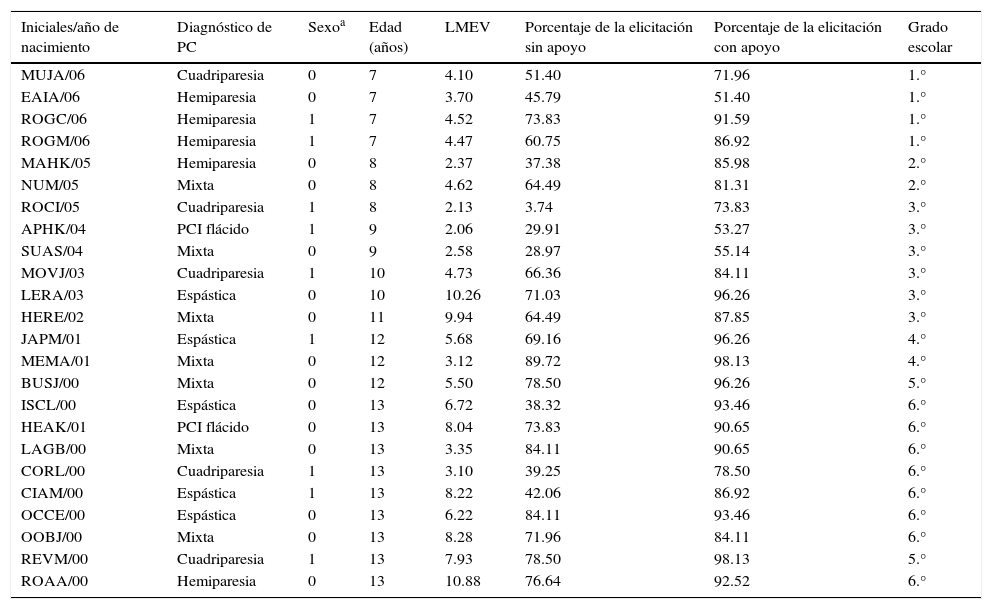La parálisis cerebral es una lesión no progresiva en las estructuras cerebrales que genera un trastorno del movimiento y de la postura. Estas lesiones también pueden afectar otras áreas responsables del desarrollo del lenguaje, tales como el sistema del habla, el sistema lingüístico o el procesamiento léxico, además de conllevar otras comorbilidades en diversas áreas.
Objetivo. Constatar el desarrollo del sistema lingüístico mediante la longitud media de los enunciados verbales y analizar el desempeño del procesamiento léxico que presentaron 142 niños mexicanos con parálisis cerebral cuyas edades comprendían de los 7 a los 13 años.
Material y métodosMediante una elicitación de datos controlados la población debían nombrar 107 entidades clasificadas en 12 campos semánticos y contar el cuento Frog, Where are you? («Dónde está la ranita») siguiendo las imágenes de la historia para comprobar su longitud media de los enunciados verbales.
ResultsSolo el 16.9% de estos niños lograron nombrar más de 50 imágenes y contar el cuento que se les había mostrado. La longitud media de los enunciados verbales solo correspondió con la edad cronológica de un solo niño; el resto estuvo por debajo de lo esperado. El 83.1% de los 142 niños con parálisis cerebral evaluados no lograron emitir más de 10 palabras en ambas elicitaciones.
Cerebral palsy is a non-progressive lesion in the brain structures that generates a disorder of movement and posture. These lesions can also affect other areas responsible for the language development system such as speech, linguistic or lexical retrieval system, as well as leading to other comorbidities in various areas.
ObjectiveTo observe the development of the language system using the Mean Length of Utterance and an analysis of the lexical retrieval presented in 142 Mexican children with cerebral palsy with ages ranging from 7 to 13 years.
Material and methodsUsing controlled data elicitation, the children with Cerebral Palsy were to name 107 entities (images) classified into 12 semantic fields and tell a story about «Frog, Where are you?», following the images of the story in order to check the Mean Length of Utterances.
ResultsOnly 16.9% of these children were able to name more than 50 images that were shown and tell a story. The Mean Length of Utterance only corresponded with the chronological age in just one child, with the rest being lower than expected. The vast majority (83.1%) of the 142 children with palsy cerebral assessed did not exceed 10 words.
Artículo
Comprando el artículo el PDF del mismo podrá ser descargado
Precio 19,34 €
Comprar ahora









